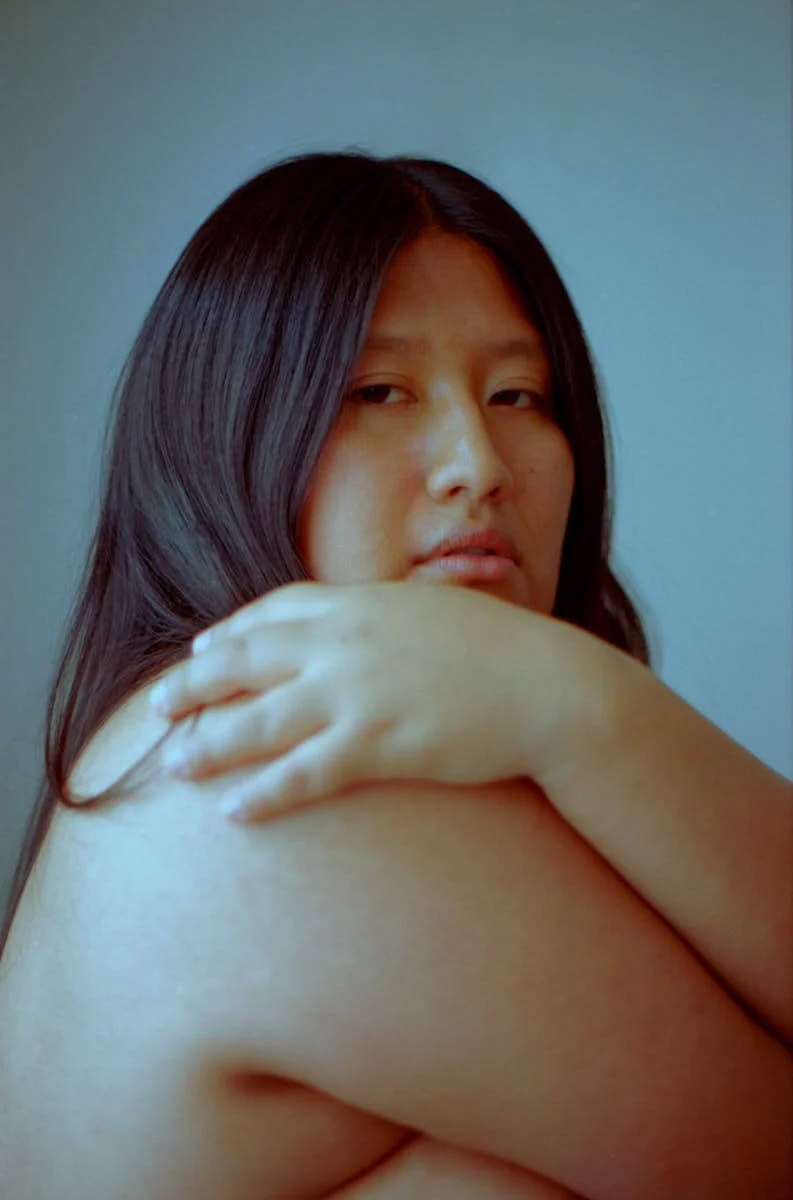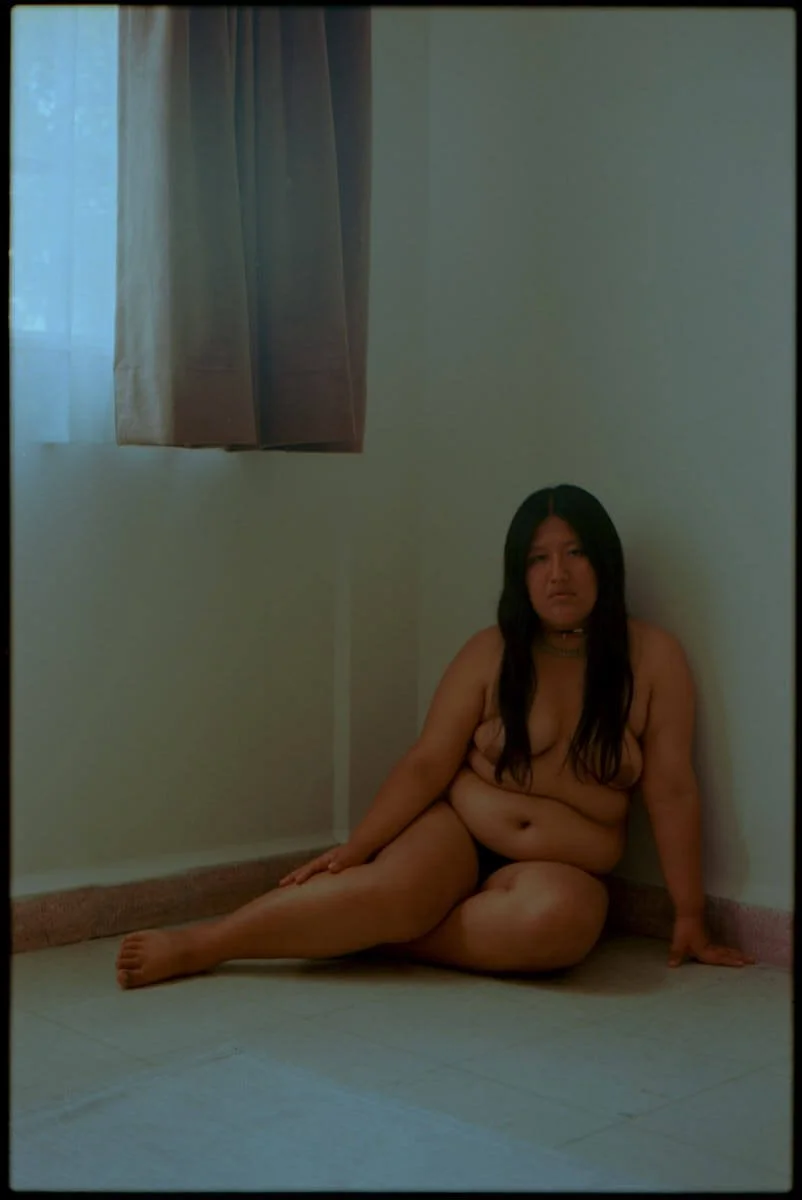PiTA
*Sacred Territories
written + interview MARK ASHKINS
PiTA’s work is a current, an unseen force moving through space, unbound by time. Her process is a pulse, a frequency felt in the marrow, where every action is a spell cast in movement and form. There is no arrival, only the endless unfolding of what has already begun.
Her hands know the weight of inheritance. Walking barefoot on sun-scorched mountains, mapping invisible lines between body and land, she stitches the air with numerology’s unseen architecture. Symbols dictate rhythm, thread extends beyond the edge, fabric refuses to end. The act of making is the act of knowing, of returning to a knowledge that has never left.
Each piece, each ceremony, each moment is a gesture—a call and an answer, happening in the same breath. The body is an archive, a site of memory and inscription, absorbing and releasing. The loom moves, the body bends, the weave extends beyond its last stitch. PiTA opens a space where time moves differently, where the act of creation is simply what must be done.
“My stories have never been easy—marked by violence, discrimination, and pain. But my body, unlike any other love, taught me how to love.”
PiTA speaks with Mark Ashkins
for LE MILE Ephemeral Edition - SS 2025 Nr. 38
Mark Ashkins
From curating events to creating designs—where does the pulse of your creativity hit hardest? In the planning, the making, or that fleeting moment it al comes alive?
PiTA
When a baby was born in our family, my maternal great-grandmother always gifted a gold jewel to the newborn, believing that gold repels bad energies. That jewel became an amulet of protection and good fortune. I return to that symbolic act as a reminder of the power of intention, of the way objects carry energy. I feel deeply connected to creation through my body—my uterus, my chest. Each project, whether it’s shaping the atmosphere of a ceremony, weaving a sculpture from two hundred meters of cempasúchil flowers, or walking, unclothed in soul and skin, through the mountains to be photographed, becomes a small birth. I rest, live, and nourish myself in these moments.
Your connection to the land and community in Oaxaca feels like the heartbeat of your work. How does that bond weave itself into your creative world?
To help my body form the arch of my feet, my father took me every afternoon to walk across mountains of hot earth. That was my initiation, my connection to the land, my integration into the rituals of my community. My work is self-referential. I open what is inside me, decontextualizing what has always existed in a fixed place.
Numerology feels like a hidden map. How do its patterns and symbols shape the way you see or create?
Inherited wisdom and the numbers of my birth date form a path that guides my intuition. I also find guidance in textiles—their numerical patterns, sequences, and rhythms. I work with a weaving technique that restores the soul, a symbol of second chances. In Oaxaca’s prisons, this technique is taught to those deprived of liberty. From behind bars, they weave bags that their families sell to sustain themselves. Traditionally called the ‘basket weaving technique,’ I call it ‘infinite weaving’ because it is a spiral with no true end. The illusion of completion exists, but in reality, the weave always has the potential to continue.
jewelry LODEPECH
“Each project, whether it’s shaping the atmosphere of a ceremony, weaving a sculpture from two hundred meters of cempasúchil flowers, or walking, unclothed in soul and skin, through the mountains to be photographed, becomes a small birth.”
PiTA speaks with Mark Ashkins
for LE MILE Ephemeral Edition - SS 2025 Nr. 38
Using your body as a canvas and a voice—what have you learned about the stories it holds and the spaces it occupies?
My nature provokes. It reveals what others carry within them while expanding what I carry inside myself. My stories have never been easy—marked by violence, discrimination, and pain. But my body, unlike any other love, taught me how to love. Through loving myself, I came to understand all bodies as sacred territories, deserving of honor, dignity, freedom, and respect.
Your events are caled ‘unrepeatable experiences.’ How do you create something that leaves a permanent mark?
Life is an unrepeatable experience—shifting, filled with characters, emotions, scenarios, loves. If I had to illustrate the surreal, fleeting nature of the human universe, I would point to a painting by the Oaxacan artist Rodolfo Morales, where all realities coexist, happening simultaneously. I open my own universe with love and honesty, stepping with respect and without judgment into the open universe of others.
How do you create space for stillness and generosity amid the constant rush and noise?
I come from a family of farmers. Cultivating plants instilled patience, the wisdom of giving, and the humility of receiving. Living alongside plants, following their cycles, develops an intuition aligned with the rhythm of the earth—one that mirrors our own human cycles. From my family, I’ve learned that there is a time and a season for everything, that nature dictates when to move forward and when to pause, and that to understand what is inside, one must observe what is outside.
Your designs carry the soul of tradition, but they slip effortlessly into the now. How do you move between these two worlds without losing their essence?
My grandfather and father passed down a gift to me—the ability to walk without getting lost. They travel from town to town, mountain to mountain, guided only by intuition. I walk constantly. My feet are my preferred mode of transport, carrying me into the unknown. I find joy in what is unfamiliar, spending much of my time there, in the other. Yet, I always find my way back to my own.
Art often walks the line between rebelion and preservation. Where does your work sit in that conversation?
Being and doing are woven from the same thread—the one that connects past and future through the present. I have always been rooted, untamed, and free. These traits shaped my childhood and continue to define my existence. Nothing should take away our freedom.
Which designer or brand feels like a mirror to your vision—timeless, but alive in the moment?
Salo Shayo—friend, visionary, and resident designer of Mexico City. His last collection, New Ode, was a love letter to pre-Hispanic and contemporary Mexico. Through ten symbolic outfits, he captured the fusion of all of Mexico’s eras—those that have passed, the one we live in now, and, seductively, a glimpse of those yet to come.
What’s a recent fashion show, colection, or creative moment that made you stop and feel something real?
A Lucha Libre presentation at the iconic San Francisco Arena in Oaxaca. Lucha Libre is a ritual, a spectacle—martial arts fused with acrobatics, theater, and maximalist fashion. When the wrestlers enter the ring, they walk a perfect balance on the ropes, wearing masks that conceal their identity, costumes that radiate vibrancy—sequins, iridescent fabrics, bold colors. But these garments mean nothing without the force, the character, the life the fighters infuse them with. Choosing a mask and costume is a profound decision. Every shape, texture, and symbol is selected with care, for they will accompany the wrestler throughout their career. That level of intention, that search for something so deeply aligned with one's true self, moves me. Even as time passes and things change, that essence remains, unwavering in its truth.
model PITA ANTONIO VELASCO
photography TATSUMI MILORI
styling + creative direction EVA BERNAL





